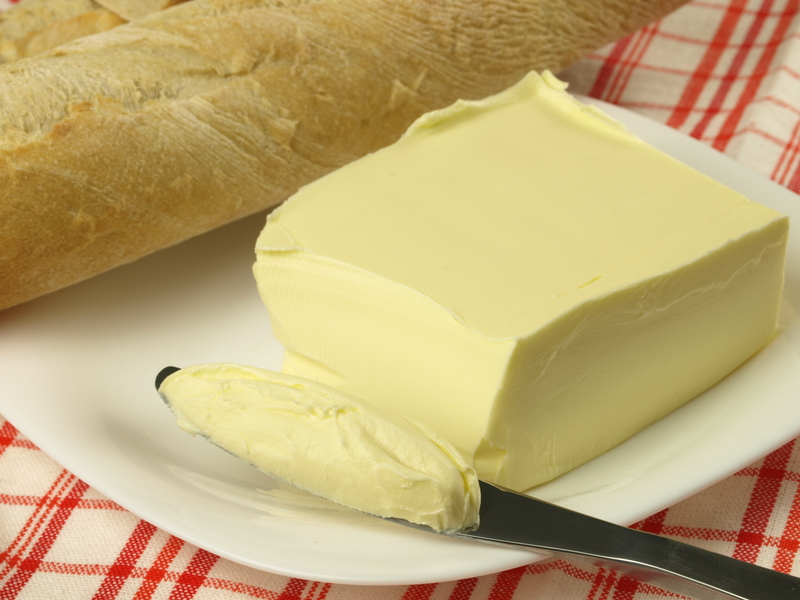Discover the Best Way to Clean Burnt-on Residue Off a Stovetop
Posted on 04/06/2025
Discover the Best Way to Clean Burnt-on Residue Off a Stovetop
There's nothing more frustrating than cooking a delicious meal only to be left with stubborn, burnt-on residue on your precious stovetop. If you're tired of dealing with crusty messes, scorched spills, and unsightly burn stains, you've come to the right place. In this comprehensive guide, you'll discover the best methods to clean burnt-on residue off any stovetop--gas, electric, glass, or induction--with safe, practical, and effective strategies.
Understanding the Challenges of Burnt-On Stovetop Residue
Before embarking on the journey to a sparkling stovetop, it's essential to understand why burnt-on residue is so tough to remove. Stovetops endure high heat, spilled sauces, and splattering oil, which can cook food particles onto their surfaces. Over time, these particles harden and cling stubbornly, leading to stubborn burnt stains that don't yield to ordinary wiping.
- High temperatures bake residues onto the stovetop surface.
- Greasy spills can form a sticky barrier, sealing in food particles.
- Incorrect cleaning tools may scratch or even damage your stovetop, especially on glass or ceramic models.
Knowing the underlying cause makes it easier to adopt the best cleaning approach for your particular stove type.

Safety First: What to Do Before You Start Cleaning
Precaution is vital when cleaning burnt-on residue from a stovetop. Always begin by ensuring your stovetop is off and completely cool. For electric and induction stoves, unplug the appliance if possible. For gas stoves, double-check that all burners are fully turned off and that there is no gas smell in the area.
- Remove grates, burners, and any removable parts.
- Wear gloves to protect your hands from tough scrubbing and cleaning chemicals.
- Keep kitchen windows open for proper ventilation, especially if using strong cleaning agents.
The Best Way to Clean Burnt-on Residue Off a Stovetop: Step-by-Step Guide
Whether you have a modern glass or induction stovetop, or a classic gas burner, these step-by-step instructions will help you achieve a spotless stovetop. Let's break down the process:
Step 1: Remove Loose Debris and Wipe Down
Start with a dry paper towel or soft brush to sweep away loose crumbs and debris. Then, use a warm, damp microfiber cloth to wipe the stovetop's surface. This action loosens stuck-on food and reveals the extent of your burnt-on residue problem.
Step 2: Pre-Soak Burnt Residue
The secret to removing burnt-on residue from your stovetop lies in pre-soaking the tough stains. Dampen a cloth with warm water and place it over the affected area for at least 10-15 minutes. For more severe burnt patches, a paste of baking soda and water can be applied and left to sit for 20 minutes, which helps break down carbonized food matter.
Step 3: Use the Right Cleaning Solution
Choosing the correct cleaning product is crucial to avoid damaging your stovetop. Here are options tailored to different stovetop types:
- For gas stovetops: Dish soap mixed with warm water works effectively. For extra-tough stains, add a small amount of vinegar to your solution.
- For glass or ceramic stovetops: Use a specialized glass cooktop cleaner. Alternatively, a paste of baking soda and vinegar is gentle yet powerful against burnt-on messes.
- For electric coil burners: Remove coils and clean the drip pans separately with soapy water and a non-abrasive sponge.
Step 4: Gently Scrape Burnt Residue
After soaking, use a soft plastic scraper or old credit card to gently lift away softened burnt residue. Never use metal scrapers, steel wool, or razor blades on glass and ceramic stoves, as these can cause scratches. For gas burners, a scrubbing brush with stiff bristles is effective.
Step 5: Repeat and Rinse
Stubborn stains may require multiple rounds of soaking, scrubbing, and rinsing. Persistence is key--reapply your baking soda paste, let it sit, and scrub again until the area is free of burnt-on matter.
Step 6: Finish with a Polish
Once the residue is gone, finish up by wiping the stovetop with a clean, damp cloth. For extra shine on glass models, spray a little vinegar and buff with a dry microfiber towel. This final step removes streaks and restores the like-new gleam to your stovetop.
Natural and DIY Methods to Clean Burnt-On Stovetop Stains
If you prefer to avoid harsh chemicals, consider these DIY and natural solutions, all proven to remove burnt stove residue effectively:
- Baking Soda and Vinegar: Sprinkle baking soda over the burn marks, spray with vinegar, and let the fizzing action lift away residue. Wipe clean with a soft cloth.
- Lemon Juice: The citric acid helps dissolve grease and stains. Rub with a cut lemon, let sit, then scrub gently with a soft sponge.
- Hydrogen Peroxide and Baking Soda: Excellent for white stovetops or those with stubborn, dark scorch marks. Mix into a paste, apply, let sit, then gently scrub and wipe clean.
- Commercial Stovetop Cleaning Creams: If DIY isn't cutting it, there are many non-abrasive creams designed specifically for burnt-on stove messes.
Tips for Using Natural Cleaners
Always test any cleaning method on a small, inconspicuous area before applying it all over your stovetop. Some surfaces, especially induction and glass stoves, can react poorly to certain acids or scrubbing agents.
Pro Tips to Keep Your Stovetop Sparkling Clean
Once you've mastered removing burnt-on residue from your stovetop, adopt these habits to prevent future stubborn stains and keep your kitchen shining:
- Wipe promptly: Clean up spills as soon as your stovetop cools down, before they bake on.
- Use burner covers: These simple accessories catch drips and are easy to clean.
- Weekly cleaning: A weekly deep clean with a gentle solution prevents buildup and makes maintenance easier.
- Avoid abrasive tools: Steer clear of steel wool or hard scrubbers unless recommended by your stovetop manufacturer.
- Check manufacturer's instructions: Always follow the cleaning guidelines tailored for your specific stovetop model.
Common Mistakes to Avoid When Cleaning Burnt-On Stove Residue
Many well-intentioned cleaning efforts can accidentally do more harm than good. Here are the top mistakes to avoid:
- Using harsh chemicals: Products containing ammonia, bleach, or abrasive powders can dull or damage your stovetop's finish.
- Scrubbing too hard: Excessive force can scratch delicate surfaces, especially on glass and induction stoves.
- Neglecting burner components: Burnt residue can accumulate under grates or on drip pans. Always remove and clean these parts separately.
- Skipping protective gear: Gloves and proper ventilation protect you from skin irritation and fumes.

FAQs: All About Cleaning Burnt Residue Off Stovetops
Can I use steel wool or metal scrapers on my glass stovetop?
No. Steel wool and metal scrapers will scratch and permanently damage glass or ceramic stovetops. Use a soft sponge, a plastic scraper, or specially-designed glass stove cleaning tools instead.
Is it possible to clean burnt-on sugar spills?
Burnt sugar is especially tricky. Moisten the affected area with vinegar, sprinkle a generous amount of baking soda, and cover with a damp cloth to soften. Gently scrape with a plastic tool, repeating as needed for complete removal.
Do specialty stovetop cleaning products work better than DIY solutions?
It depends on the stain and your stovetop's material. Many specialty products are formulated for stubborn, burnt-on messes and are safe for delicate surfaces. However, DIY cleaners like baking soda and vinegar can be just as effective, especially for light to moderate residues.
How can I clean my gas stovetop burners and grates?
Remove burners and grates and soak them in a sink filled with hot, soapy water. For an extra cleaning boost, add a little vinegar to the soak water. Scrub with a brush or sponge, rinse, and allow to dry completely before reassembling.
Conclusion: Achieve a Spotless Stovetop With the Best Cleaning Methods
Don't let burnt-on stovetop residue ruin your kitchen's appearance or your cooking experience. With the right knowledge, patience, and non-abrasive tools, you can safely remove even the toughest burnt stains from any stovetop. Remember to act promptly, use the best cleaning products for your stove type, and avoid harsh chemicals that lead to damage. Regular maintenance will not only keep your stovetop sparkling but also prolong its lifespan and ensure every meal you make starts with a clean, hygienic surface.
For more expert kitchen cleaning tips and solutions to common household challenges, bookmark this guide and share it with fellow home chefs!
- Keep your stovetop shining, and happy cooking!
- Try these expert strategies the next time you face burnt-on messes.
- Remember, a clean stovetop is the heart of a happy kitchen.




